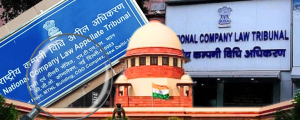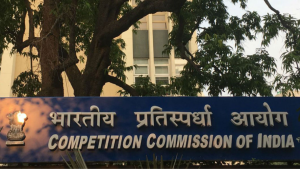

From No Evaluation to Self-Evaluation: What Justice Swaminathan’s Performance Card Should Mean for Judicial Performance Evaluation in India
Discussions around performance evaluation procedures for judges in India start with emphasising the need for judicial accountability, but suggestions for evaluation of the higher judiciary often get stonewalled against arguments on judicial independence. The higher judiciary in India, particularly, has resisted attempts at devising a system for evaluating their performance. So, when Justice G.R. Swaminathan, a sitting Judge of the Madras High Court did a performance evaluation exercise for himself, it was not only unprecedented but also urgently required. On 27 June 2019, Justice Swaminathan released information on his performance in the Madras High Court, and made it known that he disposed 21,478 cases during his two years as an additional judge (he was made a permanent judge in April 2019). Apart from data on disposal, Justice Swaminathan also announced his intention to dictate all his judgments in open Court, and to ensure comprehensiveness in his judgments.
Justice Swaminathan’s self-evaluation exercise hinges on a fundamental tenet associated with the functioning of the judiciary – transparency. The discourse around appointments to the higher judiciary regularly alludes to the fact that procedures for such appointments are opaque and the credentials of appointed candidates are seldom available publicly prior to their appointment. The benefits and goals of judicial performance evaluation are manifold as spelt out by the American Bar Association’s Guidelines for the Evaluation of Judicial Performance. The Association specifies various goals for performance evaluation in the Black Letter Guidelines for the Evaluation of Judicial Performance, some of which are the promotion of self-improvement by means of valuable feedback, enhancement of the quality of the judiciary as a whole, and effective assignment of judges to specific cases.
The higher judiciary in India rarely holds a mirror to themselves. This explains why attempts to devise a mechanism for evaluating the performance of judges in the higher judiciary (this includes judges of both the Supreme Court as well as High Courts) have not succeeded. The Judicial Standards and Accountability Bill, a law which aimed at laying down enforceable standards of conduct for judges, lapsed once in the Lok Sabha (2010) and then again, in the Rajya Sabha (2012). Had it been enacted (and implemented), the law would have required judges to declare details of their assets and liabilities, and created a mechanism to allow any person to complain against judges on grounds of misbehaviour or incapacity.
The lack of performance evaluation of the higher judiciary becomes even starker in light of the fact that judicial officers in the subordinate judiciary are subject to a certain degree of performance evaluation. The evaluation procedures for subordinate judiciary are largely state-specific. Annual Confidential Reports (ACRs), an exercise typically associated with civil servants, are also created for judicial officers. A standard form ACR is expected to assess a judge based on her general behaviour in court, quality of judgments and orders, details of disposal of her court, and special achievements in matters such as legal aid, mediation, etc. Knowledge of law and procedure is a vital attribute on which judicial officers are tested, as is evident from most State-specific ACR forms. Equally important is the application of such law to the matter to be disposed. ACRs are considered to be crucial in assessing the quality and efficiency of judges which is evident by the fact that the Supreme Court has held that judges can be denied promotion and refused extension on the basis of adverse remarks in ACRs. The performance of a judicial officer as recorded in the ACR also has a bearing on questions around compulsory retirement.
For judges in the subordinate judiciary, ACRs attempt to conduct a qualitative as well as quantitative analysis of performance. ACRs follow a three-step process – first, self-assessment by the judges of their performance; second, evaluation of the judge’s performance by the reporting authority (in the subordinate court itself); and third, assessment by the accepting authority (in the High Court). In a way, Justice Swaminathan completed the first step of this evaluation process, by subjecting himself to an evaluation of his performance. While the ACR mechanism is itself fraught with inconsistencies, some of which have also been pointed out by the Supreme Court, it is better than not having any performance evaluation at all.
While no formal proposals or mechanisms for performance evaluation currently exist for the higher judiciary, research studies in recent times have provided some leads as to the parameters for such evaluation. In a report on Development and Enforcement of Performance Standards to Enhance Accountability of the Higher Judiciary in India, the Vidhi Centre for Legal Policy pointed out that judicial performance evaluation should follow a two-pronged approach – first, evaluate individual judges, and second, evaluate court functioning. An evaluation system must aim for transparency and accountability in judicial functioning, and a combination of objective as well as subjective factors need to be devised for an effective system of performance evaluation. Justice Swaminathan’s move should encourage the judiciary to look inwards and start a conversation on devising a robust performance evaluation system. Performance evaluation will aid in addressing questions about the quality of judicial decision-making as well as judge-specific issues regarding promotions. Performance evaluation measures are a rigorous way of ensuring judicial accountability and increasing public trust in the judiciary without encroaching upon the independence of the judiciary. Mere assertions on independence without providing adequate means for accountability will not earn the higher judiciary the respect it deserves.
[ReviewDisclaimer]

Ritwika Sharma
RECENT ARTICLES


Testing the Waters: Pre-Implementation Evaluation of the 2024 CCI Combination Regulations

Not Quite Rocket Science

Administration of justice needs an Aspirational Gatishakti

-
Rule of Law ProjectRule of Law Project
-
Access to Justice SurveyAccess to Justice Survey
-
BlogBlog
-
Contact UsContact Us
-
Statistics and ReportsStatistics and Reports
© 2021 DAKSH India. All rights reserved
Powered by Oy Media Solutions
Designed by GGWP Design